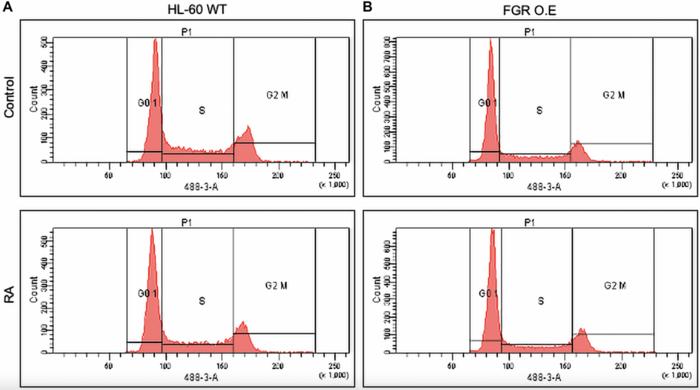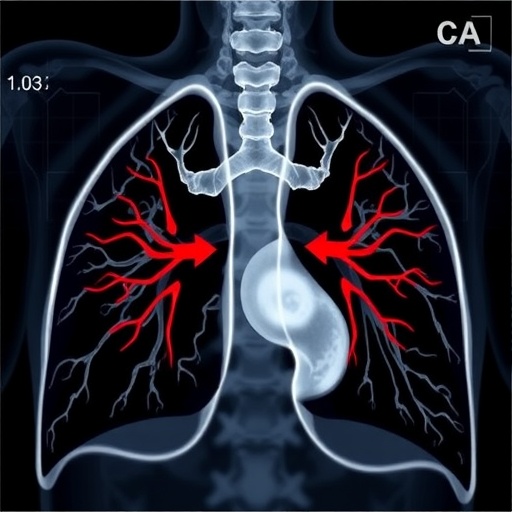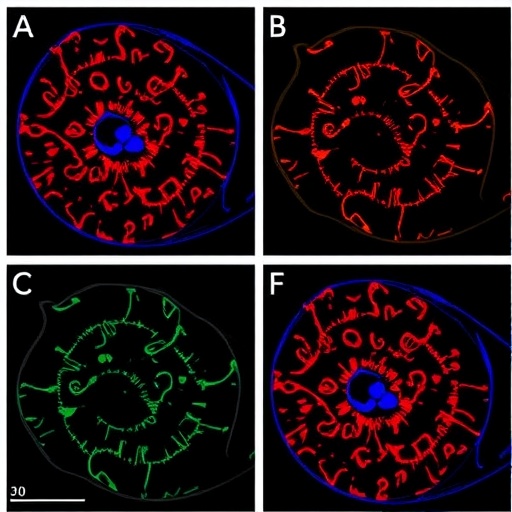A recent study published in Oncotarget revealed a revolutionary perspective on the Src family kinase (SFK) known as FGR. Traditionally considered a facilitator of cancer progression, this research illuminates its unexpected role in the differentiation of leukemic cells, closely mimicking the effects typically induced by retinoic acid (RA). This groundbreaking finding opens new avenues for therapeutic interventions in acute myeloid leukemia (AML) and related hematologic malignancies.
The research, spearheaded by a team from Cornell University, including first author Noor Kazim and corresponding author Andrew Yen, delves into the complex signaling pathways that govern cellular differentiation, particularly in the context of leukemia. The HL-60 cell line, a widely accepted model for human leukemia, was utilized in this investigation. This study highlights FGR’s capability to foster the maturation of these malignant cells into more specialized forms, akin to the well-known effects of RA, which is a critical compound in cancer therapy.
FGR’s influence on the cell cycle is particularly noteworthy. The researchers found that HL-60 cells engineered to overexpress FGR demonstrated a significant enrichment in G1/G0 phase cells. This implies a notable shift from a rapid proliferative state, characteristic of cancer cells, toward a more quiescent and differentiated state. This shift is not merely quantitative; it is accompanied by the upregulation of key maturation markers such as CD38 and CD11b, which are indicators of cellular differentiation. In conjunction with these markers, the generation of reactive oxygen species and the expression of the cell cycle inhibitor p27 were also observed, signifying a profound cellular transition.
Crucially, FGR’s mechanics align with the signaling cascades typically triggered by retinoic acid. The activation of the proteins involved in the so-called “signalsome” appears to be a vital component of this differentiation process. This group of proteins orchestrates the complex gene regulatory networks that dictate cellular maturation. FGR’s ability to instigate such a change without the direct presence of RA underscores its potential as an independent therapeutic target.
To further investigate FGR’s therapeutic implications, the scientists explored its effects on RA-resistant HL-60 cells. Interestingly, these cells did not undergo the same maturation processes when FGR was introduced, indicating deeper-seated signaling issues that might impede both RA and FGR pathways. This finding underscores the multifactorial nature of therapeutic resistance and highlights the necessity for further studies to comprehend the intricate signaling dynamics at play in resistant leukemic cells.
The implications of this study are substantial, challenging the long-standing notion of FGR solely as a cancer-promoting agent. Instead, it presents a duality in FGR’s role within cellular contexts, showing that it can also initiate anti-cancer mechanisms under certain conditions. This revelation opens the door for innovative treatment strategies, leveraging FGR’s differentiating capabilities within leukemia therapy.
As the scientific community continues to unravel the complexities of cellular behavior in cancer, the surprising properties of FGR serve as a reminder of the nuanced roles that proteins play within different biological contexts. The revelation that a single protein can mimic the actions of a sophisticated therapeutic like retinoic acid is both astonishing and offers a promising pathway for future research geared towards new leukemia treatments.
Future studies will need to further investigate the exact mechanisms by which FGR regulates the signalsome and induces differentiation. It will also be crucial to understand how these findings translate to more complex models of leukemia and other cancers where similar mechanisms may be at play. With the potential for FGR to become a significant player in cancer therapy, researchers are enthused about the possibilities that lie ahead.
This research introduces FGR as a game changer in the realm of leukemia treatment, suggesting that a focus on this protein could lead to effective strategies for overcoming drug resistance. Using FGR’s unique properties to design targeted therapies could potentially improve outcomes for patients battling acute myeloid leukemia and similar conditions.
As we look towards the future of cancer research, the story of FGR underscores the importance of reevaluating proteins traditionally viewed through a singular lens. It exemplifies the dynamic and often paradoxical nature of biological mechanisms, reminding us that breakthroughs can emerge from the most unexpected findings. This study not only enriches our understanding of leukemia metabolism but also paves the way for targeted therapeutic innovations that could reshape the landscape of cancer treatment.
In conclusion, the groundbreaking findings regarding FGR’s role in leukemia cell differentiation represent a noteworthy advancement in cancer biology. This underscores an enormous potential for translating basic research into clinical applications. Researchers, clinicians, and patients alike have much to anticipate as this field continues to evolve, driven by the pursuit of more effective and targeted therapies in the fight against cancer.
Subject of Research: Cells
Article Title: FGR Src family kinase causes signaling and phenotypic shift mimicking retinoic acid-induced differentiation of leukemic cells
News Publication Date: 21-Mar-2025
Web References: N/A
References: N/A
Image Credits: © 2025 Kazim et al.
Keywords: cancer, leukemia, FGR Src-family-kinase, cytodifferentiation, retinoic acid, therapeutic resistance.
Tags: acute myeloid leukemia differentiationcancer cell maturation mechanismscancer progression and differentiationcellular signaling pathways in leukemiaFGR and cell cycle regulationHL-60 cell line researchleukemia cell quiescence promotionnovel leukemia therapiesoncotarget research findingsretinoic acid leukemia treatmentSrc family kinase FGRtherapeutic interventions in hematologic malignancies





